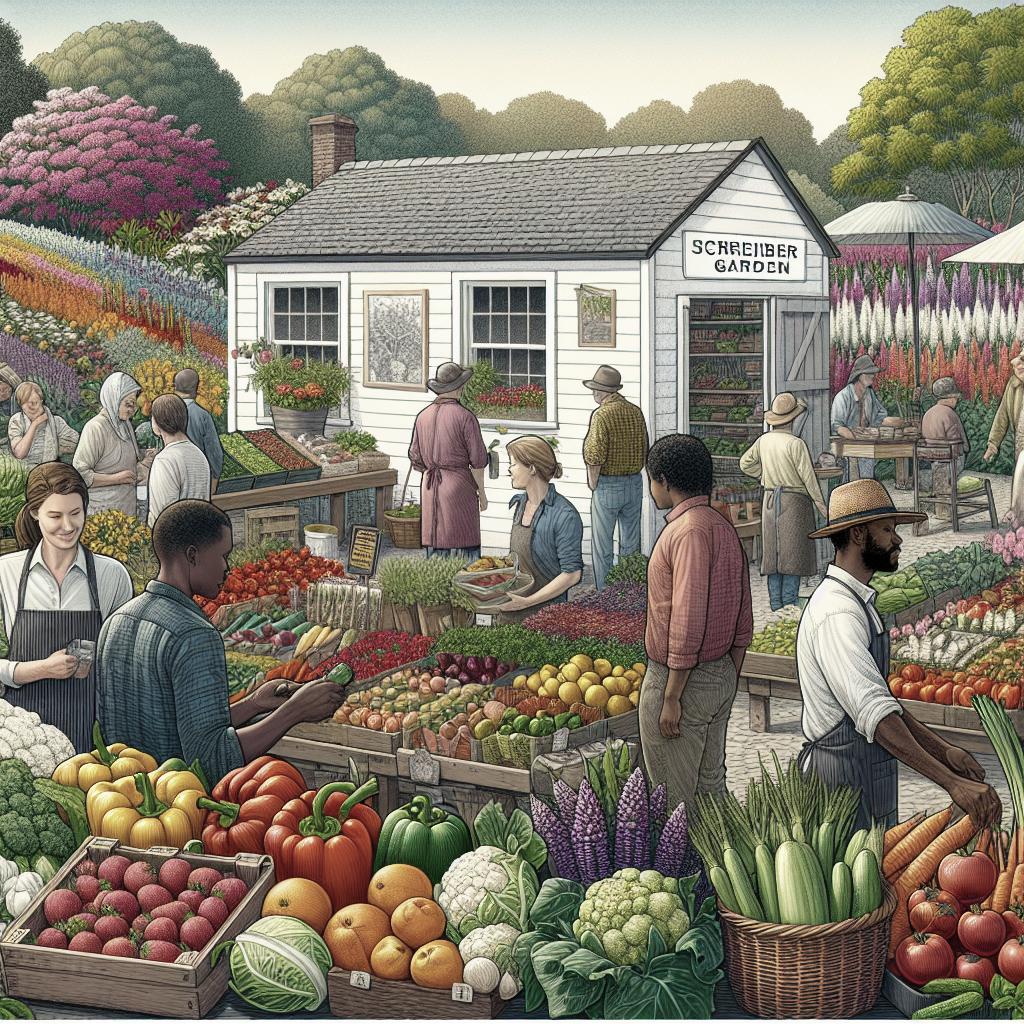Below is the HTML structure for a 2,000-word blog post about Schreiber gardening and farmer’s markets:
Exploring Schreiber Gardening and Farmer’s Markets
Nestled in the scenic landscapes, Schreiber offers a vibrant blend of gardening culture and farmer’s markets that captivate locals and tourists alike. This blog post delves into the intricacies of Schreiber’s flourishing gardens and thriving markets. From understanding gardening techniques that thrive in Schreiber’s unique climate to exploring the cultural and economic significance of its farmer’s markets, this article provides a comprehensive look into how these elements shape the community. As we dive deeper, we’ll uncover the lessons these practices impart and how they contribute to a sustainable and harmonious lifestyle.
Understanding Schreiber’s Gardening Techniques
Schreiber’s gardening techniques are heavily influenced by its distinct climatic conditions, which include long, warm summers and chilly winters. This unique weather pattern encourages gardeners to adopt specific strategies that maximize plant growth while ensuring resilience. Many local gardeners incorporate raised beds and greenhouses to extend growing seasons, allowing them to enjoy fresh produce even when the weather cools down.
The community also places a strong emphasis on organic gardening practices. Utilizing composting and natural pest control methods, Schreiber gardeners aim to achieve a sustainable ecosystem that not only yields vibrant crops but also benefits local wildlife. These techniques not only nourish the soil but also foster biodiversity, which is essential for maintaining the ecological balance within the gardens.
Exploring the Farmer’s Market Scene
Schreiber’s farmer’s markets are a bustling hub of activity where local produce, artisanal goods, and community spirit converge. These markets offer an abundance of fresh fruits and vegetables, all grown using methods that emphasize quality and flavor. Visitors can also find handcrafted products ranging from jams and honey to homemade soaps and crafts, reflecting the creativity of the community.
Moreover, these markets serve as an educational platform, where vendors share insights about sustainable farming practices and the benefits of organic produce. Visitors are encouraged to engage in conversations, learn about the sources of their food, and even participate in workshops. This interaction not only supports local farmers but also strengthens community bonds and promotes a healthier lifestyle.
The Community Impact of Gardening and Markets
The impact of gardening and farmer’s markets on Schreiber’s community is profound. These activities provide numerous socio-economic benefits, such as job creation and the stimulation of local economies. By prioritizing local over imported goods, the community reinforces self-sufficiency, which is particularly crucial in today’s globalized world.
In addition to economic benefits, gardening and markets enhance community well-being. They offer opportunities for residents to connect, share knowledge, and participate in community events. This fosters a sense of belonging and pride, empowering individuals as vital contributors to the welfare and prosperity of Schreiber.
Lessons Learned: A Harmonious Balance
As we’ve explored, Schreiber’s gardening and farmer’s market culture exemplifies a harmonious balance between nurturing the land and cultivating community spirit. The emphasis on sustainability and local engagement provides valuable lessons applicable to broader contexts. Through gardening, residents learn the importance of environmental stewardship and biodiversity, ensuring that the natural beauty of Schreiber is preserved for future generations.
Similarly, the markets showcase the significance of supporting local entrepreneurs and the rewards of cultivating a community-focused economy. These practices become a model, demonstrating that by prioritizing sustainability and community, individuals can create a prosperous and cohesive environment that thrives on mutual support and shared responsibility.
| Aspect | Details | Impact |
|---|---|---|
| Gardening Techniques | Organic practices, climate adaptation, raised beds, greenhouses | Sustainability, biodiversity |
| Farmer’s Markets | Local produce, artisanal goods, educational opportunities | Economic growth, community bonding |
| Community Impact | Job creation, local economy stimulation, well-being enhancement | Self-sufficiency, social cohesion |
This HTML blog post incorporates an introduction, detailed sections with headers, and a concluding table summarizing the lessons learned from Schreiber’s gardening and farmer’s markets.


